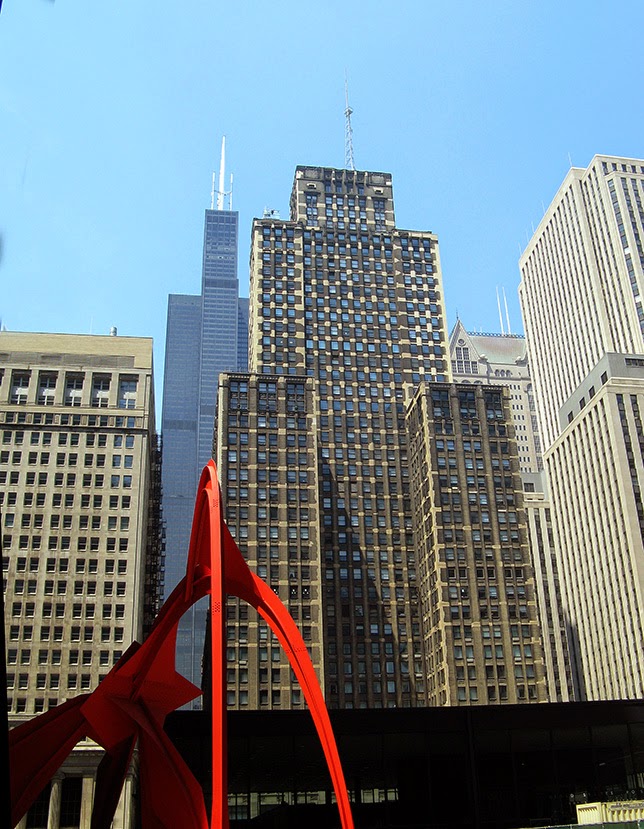 |
| click images for larger view |
Another key structure in Chicago's labor history is Pond and Pond's Chicago Commons building at Morgan and Grand, from 1901, which we hope to be writing about in far more detail soon. The Chicago Commons Association was founded by Graham Taylor in 1894, patterned after Jane Adams' Hull House to serve the area's poor immigrant population.
The Commons was home to pro-labor organizing activity, including a 1902 mass meeting to reduce retail worker's 14 hour days. Although only 100 clerks showed up for the meeting, one speaker noted that the clerks had formed 13 unions and gained 2,000 members, and their efforts secured the reform that �nearly every store from Belmont to the Chicago River had been induced to close evenings.�
After the Chicago Commons merged, it moved its operation and sold off the building in 1947. It's had an often-troubled past since then, but that may now finally changing with AJ LaTrace of Curbed Chicago reporting in July that the structure is to be restored as the centerpiece of a new campus for the Bennett Day School.
Finally, there's the building at Sheridan and Diversey that, since a late 1970's/early1980's renovation and expansion, has housed offices for medical professionals affiliated with St. Joseph Hospital. Originally, however, it was the proud, modernist headquarters for the Amalgamated Meat Cutters International, chartered by AFL in 1897 to consolidate seven Chicago unions.
A 1904 strike saw 18,000 meat cutters go out on strike for higher wages. Although joined by most other major unions in the city, national leadership refused to support the strikers. Employers turned to the city's large population of unemployed African American workers to serve as strikebreakers, which resulted in union members attacking the strikebreakers, police rallying to protect them, 4,000 union workers rioting, and the strike ending in total defeat. Jane Adams interceding with stockyards magnates to procure a contract that would save face for union members, and keep the union, itself, from being destroyed.
 |
| image courtesy The Chuckman Collection |
Today, the only surviving remnant of the original union presence is Egon Weiner's Brotherhood, an identical pair of sculptures positioned at either side of the entrance. According to Jyoti Srivastava's essential Public Art in Chicago blog, each bronze grouping of Brotherhood depicts four �kneeling figures whose extended arms are interwined [to] represent unity of people of Europe, Asia, Africa and North America. Each grouping bears a different set of inscriptions . . .
. . . Brotherhood. Liberty. Tolerance. Equality. Peace and Unity. Justice. Friendship. Knowledge.
Happy Labor Day
Also Read:
Worker Spaces, In Fiction and Fact
The Architecture of Chicago's Unionville




































































